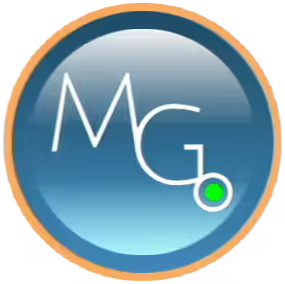Integrating Modern Technology into your Practice without Blowing your Client out of the Water
Fads come and go in every industry. Some change that industry, while most fall by the way side. What can be difficulty is determining what is fad and what is necessary change to keep up with demand and not fall behind. We are currently in a "technology age”. Tech makes our life easier, and sometimes more frustrating. It streamlines revenue, defends countries, and allows up to communicate without even opening our mouths. The one distinct characteristic about modern technology is that it changes quickly. And integrating that change into business is mandatory for anyone who wants to keep ahead of their competition. The rehabilitation industry is no different. This blog suggests the use of modern technology in practice. But not with the intent of solely using technology for the sake of attempting to “be modern”; but rather to begin engaging clients to truly understand their "purpose" in rehab...not necessarily to understand the "why" of rehab. That purpose might range from learning a basic home activity routine, gain motion and/or function, determine how to properly load tissues that are currently intolerance, or simply gain better understanding of how their condition may have started. Empower the patient to be in control of what they can control. Enhance their experience through education, but with a professional barrier that is filled with knowledge and understanding. We can't put our patients into a box that we create with our knowledge. Let's face it. Paradigm shifts continue to occur. And these will often contradict the previous paradigm shift.
Embracing each one with what benefits the patient, but also meets the patient’s goals is the focus. The old adage "you can lead a horse to water" applies to each and every client. Some clients are really thirsty, some just want a sip and move on, while others just want to follow to the watering hole because they heard its a "cool" hang out (i.e. their Dr. told them to go and not understanding why they even showed up to their appointment). Recognizing which client is which horse may dictate which psychological strategy you use during your treatments; and avoid blowing them out of the proverbial watering hole during their visits. Try and run with Thoroughbreds for education, but you had better change your strategies with your old nags because they drop off your schedule if you go over their heads. But they still have value if you explain things on their level. But all will appreciate keen technology applied to their rehabilitation.
With the readily available access to information (right, wrong or fabricated) that our clients have access to via the internet and social media, practitioners cannot afford to either under or over-educate their clients during their visits. But rather encourage them to collaborate during their visits. Take some ownership over their care while not having to dive into complete understanding of what they are doing. Example: Utilizing visual feedback into a client’s care will unite researched based education and patient interaction to collaborate into patient experience and likely improved outcomes. The client doesn't have to understand what the mechanisms are for external feedback and motor learning to appreciate that keeping a laser beam centered on a target means they are providing some type of stability to their environment. The unity of modern science and technology play well in this example. This exact reason is why I prefer to use the MotionGuidance visual feedback system in my clinic today for most of my clients.
It’s individual to them. They can transition into their HEP. They get it! Regardless of their age, background, or knowledge base. Thanks to companies like Apple, Samsung, and Sony, almost every client that we see has a resource to catalog and library their content learned during their rehabilitation process. Videos or photos can be shot on every phone or tablet and create a record of what the client was doing, how, many and what things to avoid to enhance their exercises between visits to your clinic. And the savvy client might even have aps like UberSense or My Coach to further enhance their feedback and understanding to their HEP. Just be sure to adhere to your clinic guidelines for HIPPA rules.
In short, the age is upon us that requires the use of modern technology devices to help maximize how our clients rehabilitation needs. We shouldn’t resist these movements, but rather embrace them with our own understanding that we, the practitioners, must be dynamic and understanding enough to recognize what clients will respond to how much technology we give them during treatment.
Eric Dinkins, PT, MS, OCS, Cert. MT, MCTA,



Leave a comment
Please note, comments must be approved before they are published